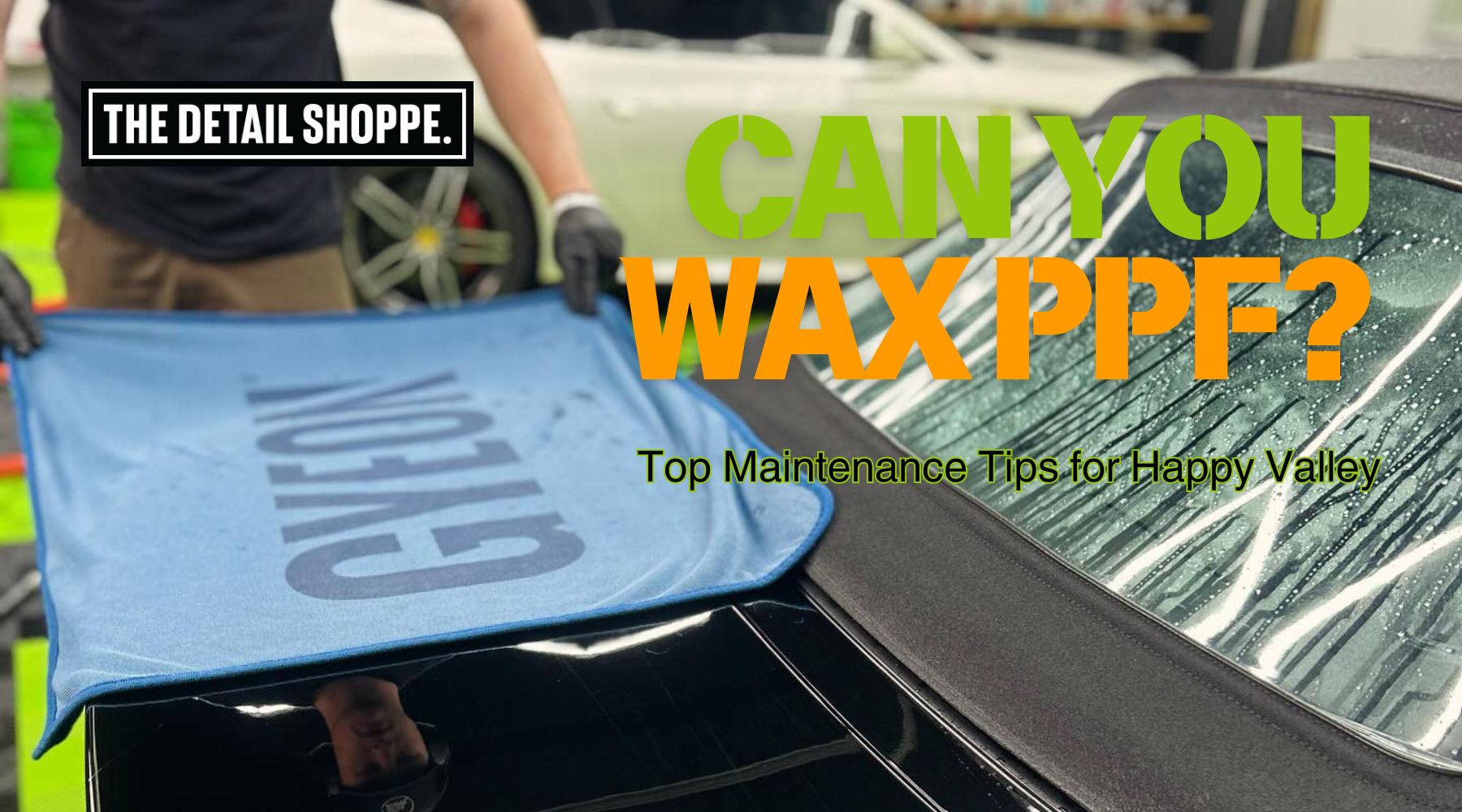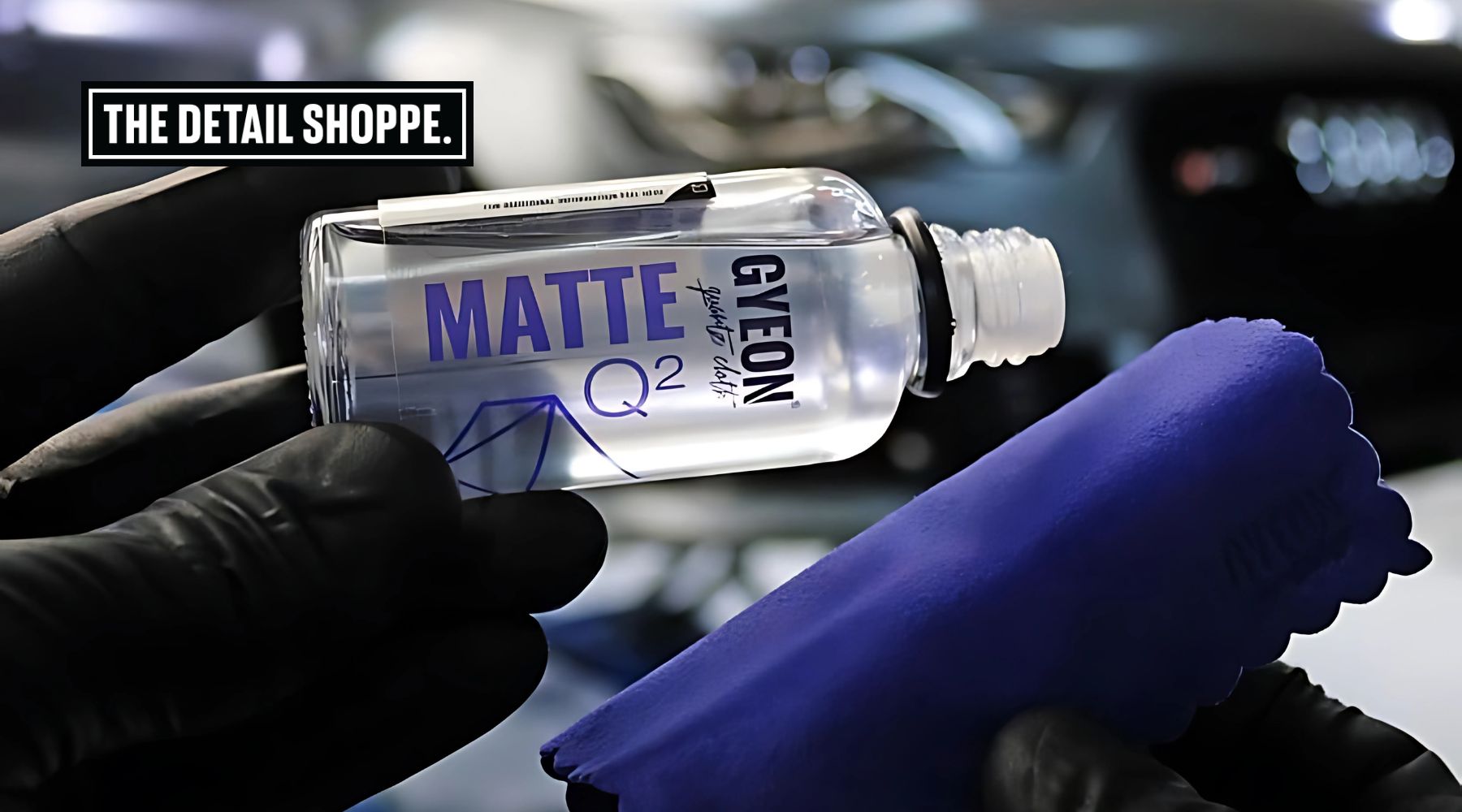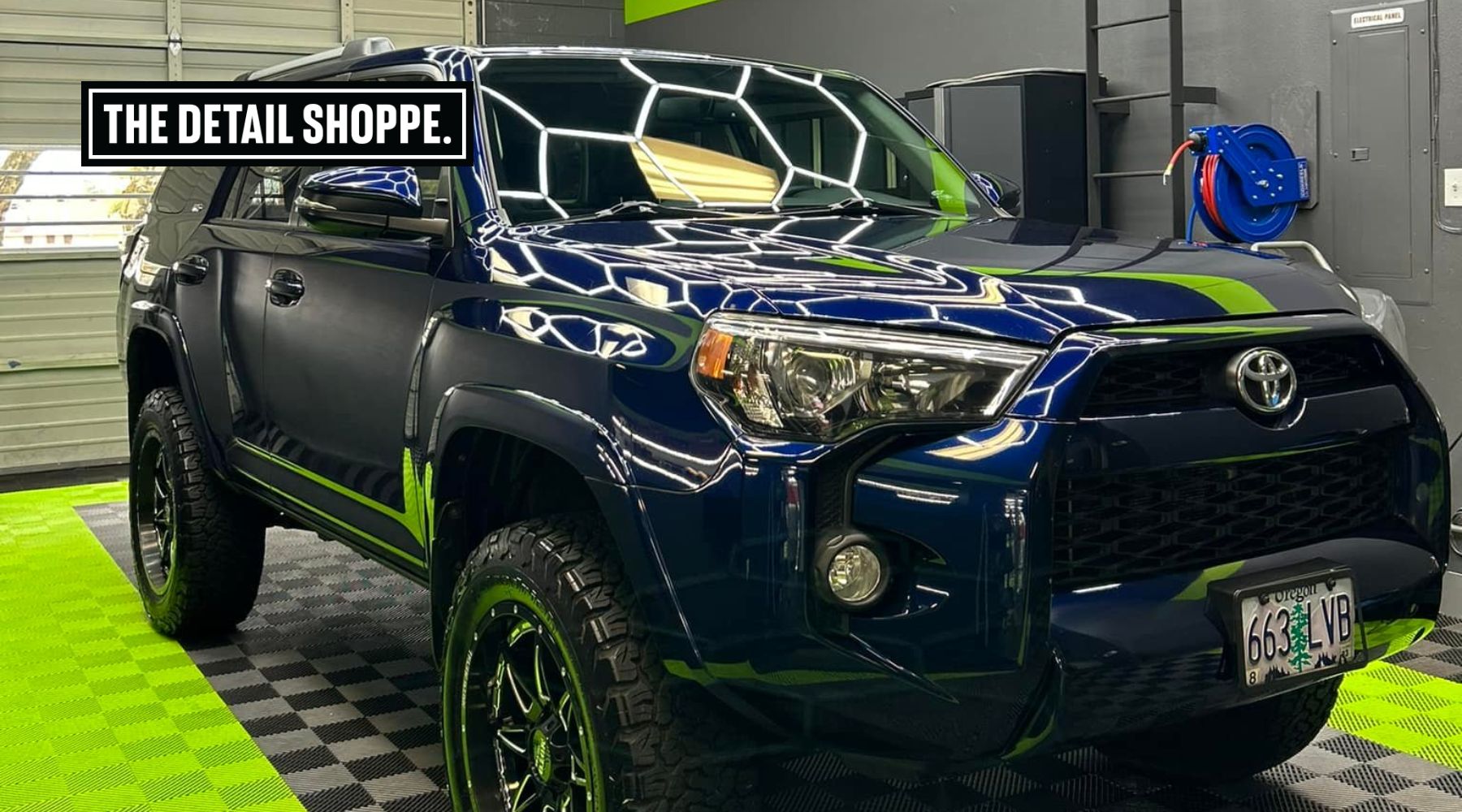Ceramic coating has become a go-to solution for car owners looking to protect their vehicle’s paint, preserve that glossy finish, and minimize the time spent on cleaning. But what happens when your coating starts to wear off or you’re preparing for a fresh application? Understanding how to safely remove ceramic coating is crucial to avoid damaging the underlying paint or compromising the car’s clear coat.
At The Detail Shoppe in Happy Valley, OR, we regularly guide clients through this process. Here’s everything you need to know—from proven techniques to post-removal care—so you can handle ceramic coating removal with confidence.
Understanding Ceramic Coating and Why Removal May Be Necessary
Ceramic coatings create a semi-permanent, hydrophobic layer that shields your vehicle from UV rays, bird droppings, road grime, and even minor scratches. Applied correctly, they offer superior gloss and protection—but like all protective layers, they have a lifespan.
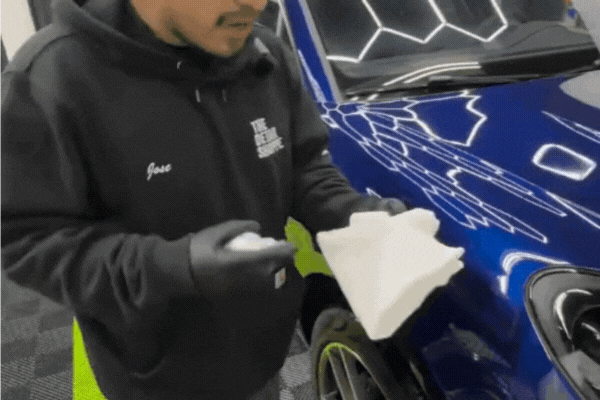
Here are common reasons you might need to remove a ceramic coating:
- Deterioration of the Coating: Over time, exposure to harsh weather, automatic car washes, and improper maintenance can degrade the coating’s effectiveness. A telltale sign is when water stops beading and starts sheeting across the surface.
- Surface Contamination: As coatings age, they can trap microscopic contaminants like iron particles, tar, or industrial fallout, making the finish feel rough or appear dull despite regular washing.
- Reapplication or Brand Switch: To ensure a new ceramic coating bonds properly, it’s essential to remove any traces of the old layer—coatings don’t layer like wax or sealants and must be applied to a clean, bare surface.
- Corrective Detailing: If your vehicle requires paint correction due to swirl marks, oxidation, or scratches, removing the existing coating allows direct access to the paintwork for polishing and restoration.
- Improper Application: In some cases, DIY applications or rushed jobs can result in streaking, high spots, or uneven protection. Starting fresh with a professional service ensures long-term durability and visual appeal.
For a deeper dive into the science behind these coatings, visit our blog, “Understanding the Ceramic Coating Composition.”
Professional Methods for Safely Removing Ceramic Coating
Removing ceramic coating isn’t as straightforward as washing it off. It requires a careful combination of products and techniques to ensure no damage occurs during the process.
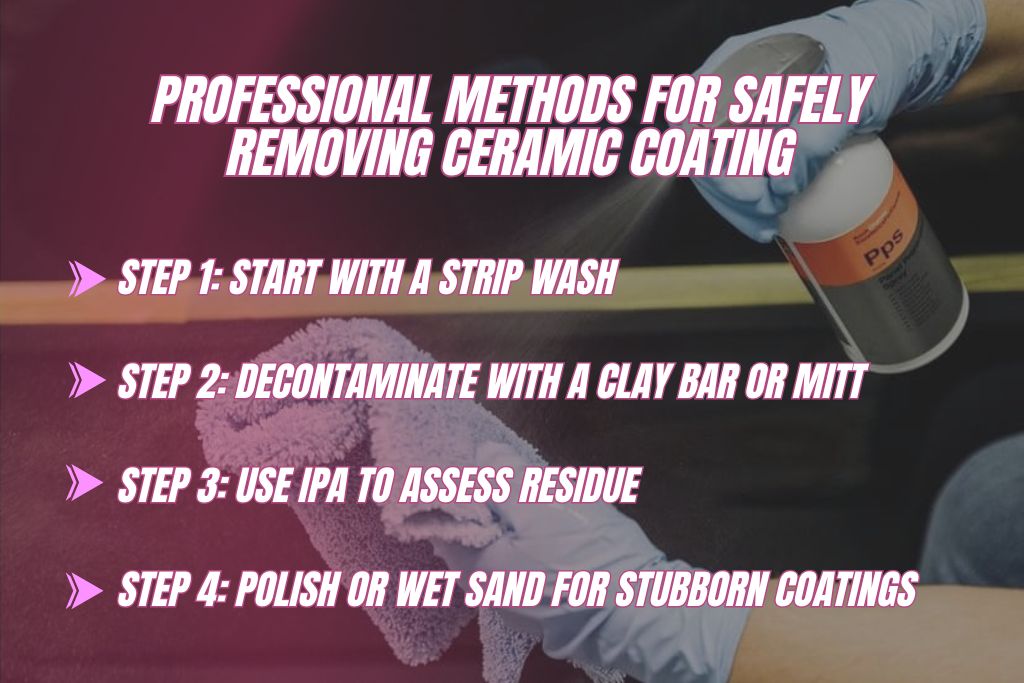
Step 1: Start with a Strip Wash
Use a wax-stripping shampoo to begin breaking down the coating’s bond with the paint. A pH-neutral formula is ideal for avoiding damage to your clear coat.
- Employ the two-bucket method (one for rinse, one for wash) and a foam gun if available.
- Avoid household detergents like dish soap, which can be too harsh.
This step starts the ceramic coating breakdown and prepares the surface for more intensive methods.
Step 2: Decontaminate with a Clay Bar or Mitt
Once the vehicle is clean, use a clay bar or clay mitt with a quality lubricant to lift embedded contaminants and any remaining loose coating residue.
- This method is best for light ceramic coating removal.
- Be gentle to avoid coating abrasion or surface marring.
This step addresses surface decontamination, which is crucial before any polishing or reapplication of the material.
Step 3: Use IPA to Assess Residue
After claying, use a 70% isopropyl alcohol (IPA) spray or a ceramic coating prep wipe.
- It helps remove lingering oils or waxes.
- It reveals remaining coating by observing how water reacts on the surface—if it beads, there’s still coating left.
This “test” helps assess the hydrophobic layer removal and determine the need for further action.
Step 4: Polish or Wet Sand for Stubborn Coatings
For coatings that are still bonded tightly, polishing or even wet Sanding may be required.
- Use a dual-action polisher with a light to medium polishing compound.
- If polishing doesn’t fully remove it, wet sanding (using 2000–3000 grit) may be necessary—but only in professional settings.
This step directly tackles clear coat restoration, so it must be done carefully or by professionals like the team at The Detail Shoppe.
Elevate Your Ride With

Comparing Ceramic Coating Removal Methods
Each removal method has its pros and cons, depending on the coating’s condition and the type of paint on your vehicle.
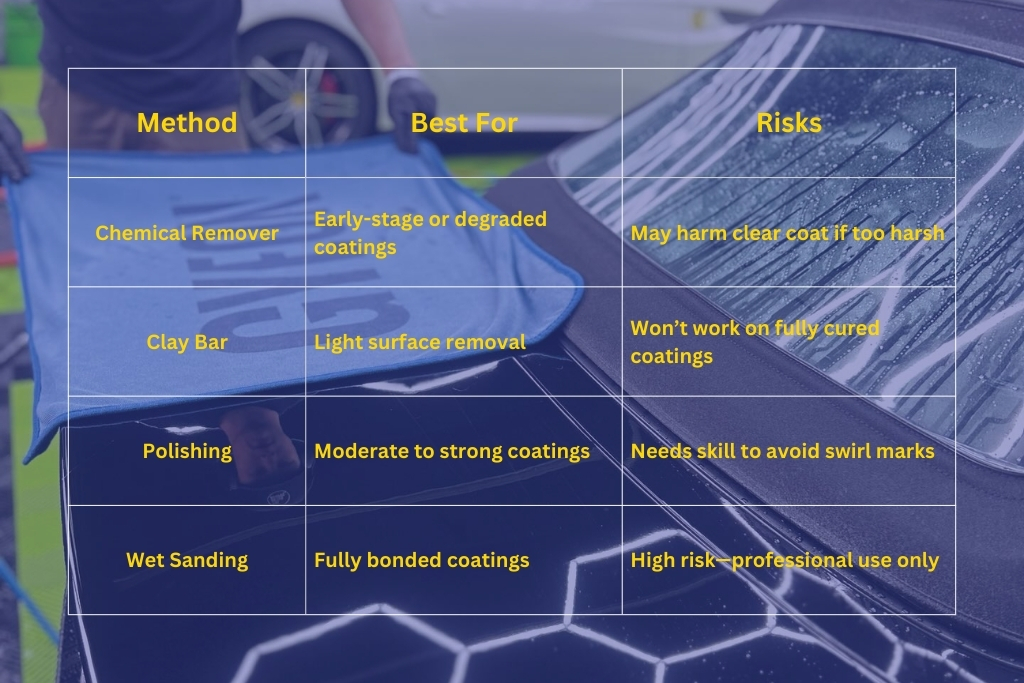
Chemical removers work well for softening newer coatings, but must be used with caution to avoid damaging the clear coat.
Clay bars are great for light residue but ineffective on tougher coatings.
Polishing is ideal for stronger coatings but requires the right technique to avoid swirl marks.
Wet Sanding should only be used as a last resort by professionals, as it can thin the clear coat.
Pro Tip: If your vehicle has matte or satin paint, avoid polishing or Sanding. These methods can permanently alter the finish. Always consult a professional. Learn more in Why Ceramic Coating Is Essential for Vehicles in Happy Valley, OR.
Step-by-Step Checklist for DIY or Pro Removal
Whether you’re doing it yourself or relying on a detailing expert, follow this structured approach to ensure a clean, safe removal of your ceramic coating:

Test the Coating – Spray water across the surface. If it beads up, the coating is still active. If it sheets off, the coating may be mostly gone.
Wash Thoroughly – Use a wax-stripping shampoo and the two-bucket method to lift surface dirt and begin breaking down the coating.
Clay Treatment – Apply a clay bar or mitt with ample lubricant to remove embedded contaminants and any loose coating residue. Be gentle to avoid marring.
Rinse and Dry – Rinse off all residue and dry each panel with a clean microfiber towel to prevent scratches.
IPA Wipe-Down – Use a 70% isopropyl alcohol (IPA) solution or prep spray to eliminate any oils or residues left behind.
Polish if Needed – If water still beads or the surface feels rough, polish using a dual-action polisher with a light to medium-cut compound.
Recheck the Surface – Repeat the water test. The absence of beading indicates the coating has been removed.
Prep for New Coating – Perform a final clean-up, inspect for any remaining defects, and ensure the surface is fully decontaminated before applying a new ceramic layer.
Tip: Always work in a shaded, well-ventilated area to avoid premature drying of products or streaking.
Why Trust the Experts at The Detail Shoppe?
Located in Happy Valley, OR, The Detail Shoppe has earned a reputation for delivering high-quality automotive care backed by expert craftsmanship and industry-leading products. Whether you’re looking to remove a worn ceramic coating or prep your vehicle for a brand-new application, our team is equipped with the knowledge, tools, and attention to detail required to do it right.
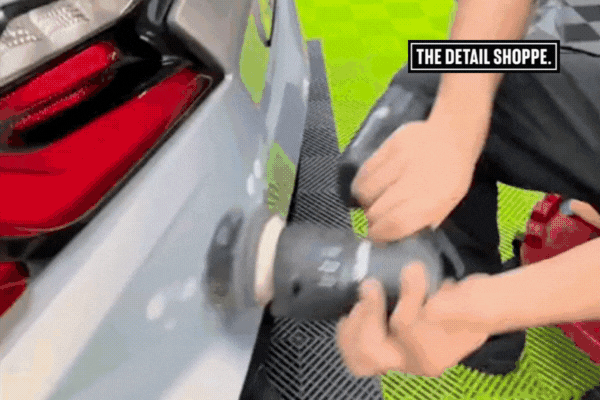
We specialize in ceramic coating, paint protection film (PPF), window tinting, and professional auto detailing, offering complete surface protection solutions tailored to your vehicle’s needs. Unlike one-size-fits-all approaches, our services are customized based on the coating’s condition, paint type, and your long-term goals.
What sets us apart?
- Skilled Technicians: Our detailing pros use proven removal techniques—from strip washes and clay treatments to polishing and wet Sanding—all while preserving the integrity of your vehicle’s finish.
- Top-Tier Products: We use only trusted, professional-grade products to ensure safe and effective results.
- Customer-Centered Service: From consultation to final inspection, we keep you informed and involved, so there are no surprises—just outstanding results.
- Local Expertise: We understand how Oregon’s unique weather conditions can affect vehicle coatings and tailor our recommendations accordingly.
Thinking about a full paint refresh or switching to a new ceramic brand? Let us handle the prep work. Visit our Auto Detailing Services page to learn how we can restore your car’s finish and elevate its protection.
Post-Removal Care and New Coating Prep
Once the old ceramic coating has been safely removed, preparing the surface correctly is essential for the success of the new application.
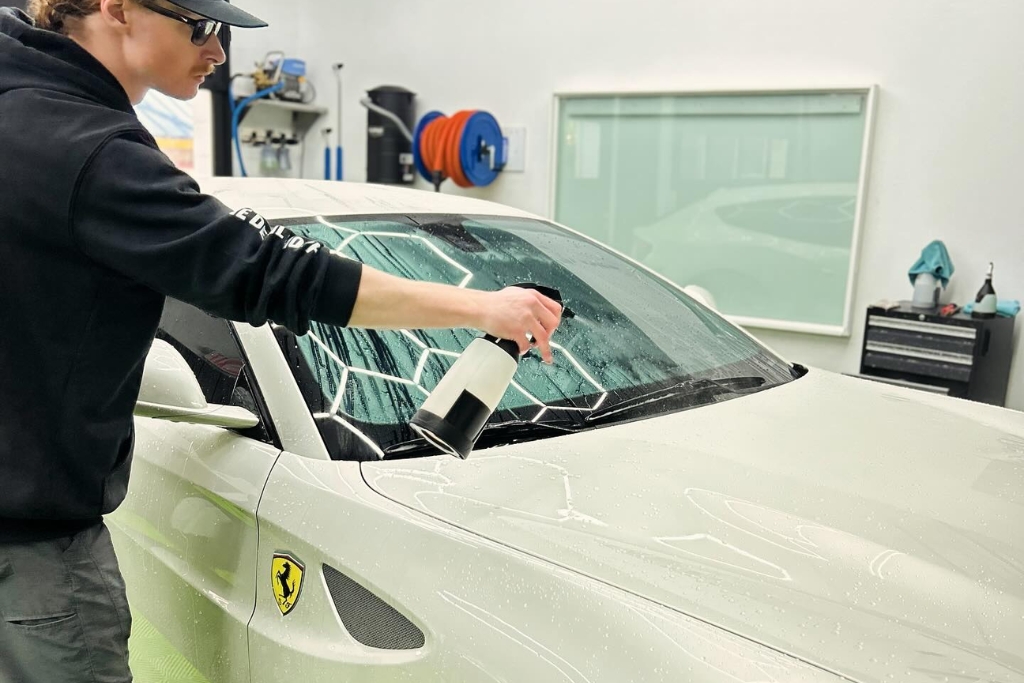
- Final Clean-Up: Thoroughly wipe down all panels to remove any polishing residue, clay lubricant, or lingering oils. A clean surface ensures proper bonding of the new coating.
- Environmental Control: Apply the new ceramic coating in a dust-free, temperature-controlled environment. Avoid exposure to humidity, direct sunlight, or wind during application, as these conditions can affect the cure time and bonding.
- Surface Prep: Use a ceramic prep spray or panel wipe to strip away any remaining contaminants. This creates an ideal bonding surface and prevents issues like high spots or coating failure.
For best results, wait until the surface is completely cool to the touch before beginning application.
To better understand how coatings improve long-term protection and gloss, check out our blog: How Ceramic Coating Enhances Paint Protection and Shine
Conclusion
Learning how to safely remove ceramic coating helps you protect your vehicle and maximize the results of your next detailing investment. Whether you’re tackling it yourself or relying on professionals in Happy Valley, such as The Detail Shoppe, taking the right steps ensures your vehicle stays pristine.
Ready to refresh your vehicle’s shine? Contact us at The Detail Shoppe or explore our professional Ceramic Coating Services to get started.
Frequently Asked Questions
What chemical can remove ceramic coating?
Alkaline-based wax strippers or degreasers can break down ceramic coatings, but they must be used carefully. Always test in a small area first.
Does rubbing alcohol remove ceramic coating from a car?
Isopropyl alcohol (IPA) doesn’t fully remove ceramic coating, but helps identify remaining areas by revealing water beading behavior.
Will high-pH soap remove a ceramic coating?
Yes, over time. But they may also degrade your paint’s clear coat. Stick to automotive-specific strip shampoos.
Why is it necessary to remove ceramic coating safely?
Improper removal can scratch your paint, dull the finish, or prevent a new coating from bonding effectively.
Why is polishing a common method to remove ceramic coating?
It uses light abrasion to break down the remaining layer of coating without harming the paint—when done properly.

